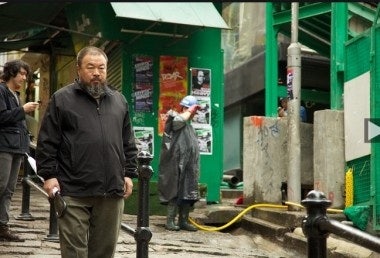A Busy Week In The World Of Chinese Art#
With everyone gearing up for the Hong Kong International Art Fair (taking place May 27-30) and the Christie's Spring Auctions, there's been a great deal of activity this week in the world of Chinese art. Here are some of the most interesting art stories that caught our eye along the way:
"Chinese artist Zhang Huan's 'Three Heads, Six Arms' a monumental shift" (#
Los Angeles Times#
)#
The last time that the Chinese art star Zhang Huan made a public appearance here, just over a decade ago, he was lying face down on an uprooted tree, naked, covered with dog food. A pack of nine dogs, invited to participate in his performance, fought for the chance to lick it off. One bit the artist.
This week, Zhang flew into town from Shanghai for the dedication ceremony for "Three Heads, Six Arms": a 15-ton, two-story tall sculpture, considered the artist's largest to date, which has been installed in the plaza in front of City Hall. The San Francisco Arts Commission brought the work to town as part of its public art program and as a way of promoting a "sister city" alliance with Shanghai.
It was, to say the least, a more welcoming event. For starters, the artist was fully clothed, wearing baggy gray pants and jacket. And this time, it was a mixed crowd, with schoolchildren, a few Buddhist monks, and some prominent Chinese American business leaders in the audience and Mayor Gavin Newsom among the speakers.
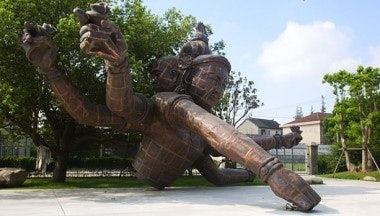
"Jade Pushes Chinese Art Sale to $9.8 Million at Bonhams" (#
Artinfo#
)#
It took Bonhams' international Asian art sales head Colin Sheaf almost eight hours to complete the house’s 456-lot sale of Chinese art on last week, but his endurance paid off. The house brought in £6.6 million ($9.8 million), with 80 percent of works lots selling in a room filled with about 200 bidders.
Bonhams’ performance more than doubled the £3.2 million ($4.6 million) totaled at the Chinese art auction last May, when widespread economic uncertainty led to substantially lower auction totals around the world. Sheaf, who is also the auction house's deputy chairman, told ARTINFO, “We managed to source much finer objects this time, and the response from Chinese buyers was tremendous.”
Specialists at Bonhams called the 35 jades they were offering a “once in a lifetime” opportunity in the sale’s catalogue, and bidders certainly acted accordingly, sending many lots to prices more than ten times their high estimates.
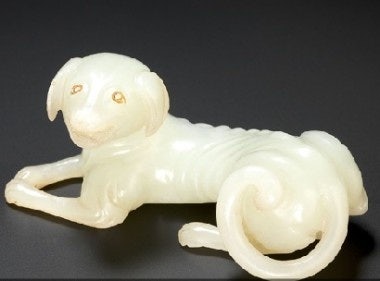
"Showtime: 10 Things To See At The Hong Kong International Art Fair" (Wall Street Journal)#
As the rivalry between Singapore and Hong Kong continues apace in the cultural arena, an array of art happenings clustered around the Hong Kong International Art Fair is set to transform the city with a week of world-class art events. It's another step toward Hong Kong's goal of besting Singapore to become Asia's regional arts hub.
The fair, also known as Art HK 10, runs from May 27 to 30. In just its third year, it's not nearly as big as some of the world's more established contemporary art fairs such as Art Basel or London's Frieze Art Fair. The Frieze, for instance, draws some 60,000 visitors, and is a well-known showcase for the hottest, fastest-rising contemporary artists.
But with a lot of the air taken out of the contemporary-art bubble, and international players seeking new markets, Hong Kong—with its proximity to wealthy mainland Chinese collectors—has become a magnet. This year, there's much more to see around the fair than before. Top American, European and Asian galleries are holding special exhibitions; stars in the performance-art world have come to do their thing; and Christie's and a slew of other auction houses—which have already turned Hong Kong into the world's third-largest art-auction center behind New York and London—will hold their annual spring auctions to coincide with the fair.
...
Overall, fair attendance is expected to rise again, following the 30% jump to 28,000 last year; and a booth at the show this year was not easily had: The number of participating galleries—150 from 29 countries—was culled from a list of 300 applicants, says Magnus Renfrew, the fair's director.
"Art HK has become the fair in Asia," contends Phil Tinari, an art critic and curator.
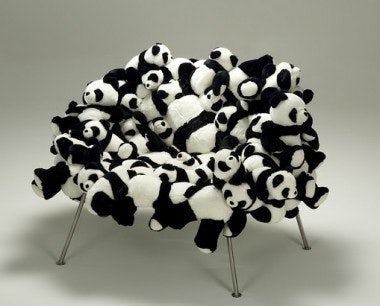
"Green art, traditional inspiration" (#
Xinhua#
)#
Known as one of the most avant-garde and successful Chinese artists in the international art world, 55-year-old Gu Wenda has recently turned to reflect social issues such as environmental protection in his work and is trying to offer a solution for a green future city life. Gu spoke exclusively with the Global Times while in Shanghai over the weekend.
His latest achievement China Park, a model of future city planning, is part of his large-scale Green Calligraphy Landscape Art Project. It attracted a lot of viewers Saturday on its release at Shanghai Pujiang Overseas Chinese Town, where the model is set in a square.
"I do not want my art being something just kept in the hands of collectors or displayed in museums," Gu told the Global Times. "Artists should be responsible to the world they are living in and offer solutions no matter how long is needed to put them into practice."
Combing traditional Chinese concepts such as yin and yang, Chinese calligraphy and the architectural idea of traditional Chinese gardens, China Park offers a blueprint for an ecologically-friendly future city and makes a spectacular contemporary garden scene.
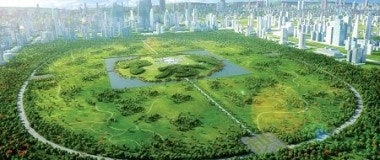
"Unhappy picture for Beijing's art hotbed" (Asia Times)#
Ten years ago, Ai Weiwei, one of China's best-known artists, designers and activists, moved into a dusty village in the city's far northeast corner, where he designed a compound for himself and friends, along with a gallery called China Art Archives and Warehouse.
Back then, the village, called Caochangdi, was little more than a collection of warehouses, a few homes and restaurants, and workers' barracks. Today, defined by the low, grey-brick galleries that honor Ai's original designs, Caochangdi has become Beijing's creative epicenter and a hotbed of Chinese art.
Although often overshadowed by its better-known and increasingly commercialized neighbor, 798 Art District - also known as Dashanzi - Caochangdi today is home to some of China's most prominent artists and galleries, including Pekin Fine Arts, Three Shadows Photography Art Center and Boers-Li Gallery.
But like other artist communities that have come before it, Caochangdi is in jeopardy. In mid-April, residents were given notices of eviction and told that the suburb would be demolished to make way for government projects, business development and, ironically, a "Cultural District".
The notice, vague on timing and similar to one received last summer, originated from the village government office. "Following the progression of urbanization, our village has been listed for demolition and eviction, but the time has not been specified," it read.
The threat of demolition arrives as the bohemian art zone has started coming into its own. Last month, Three Shadows spearheaded the PhotoSpring photography festival, modeled after the Arles festival in France. PhotoSpring, which involves 27 galleries and over 200 artists, drew more than 5,000 people on opening weekend and will run until June 30.
